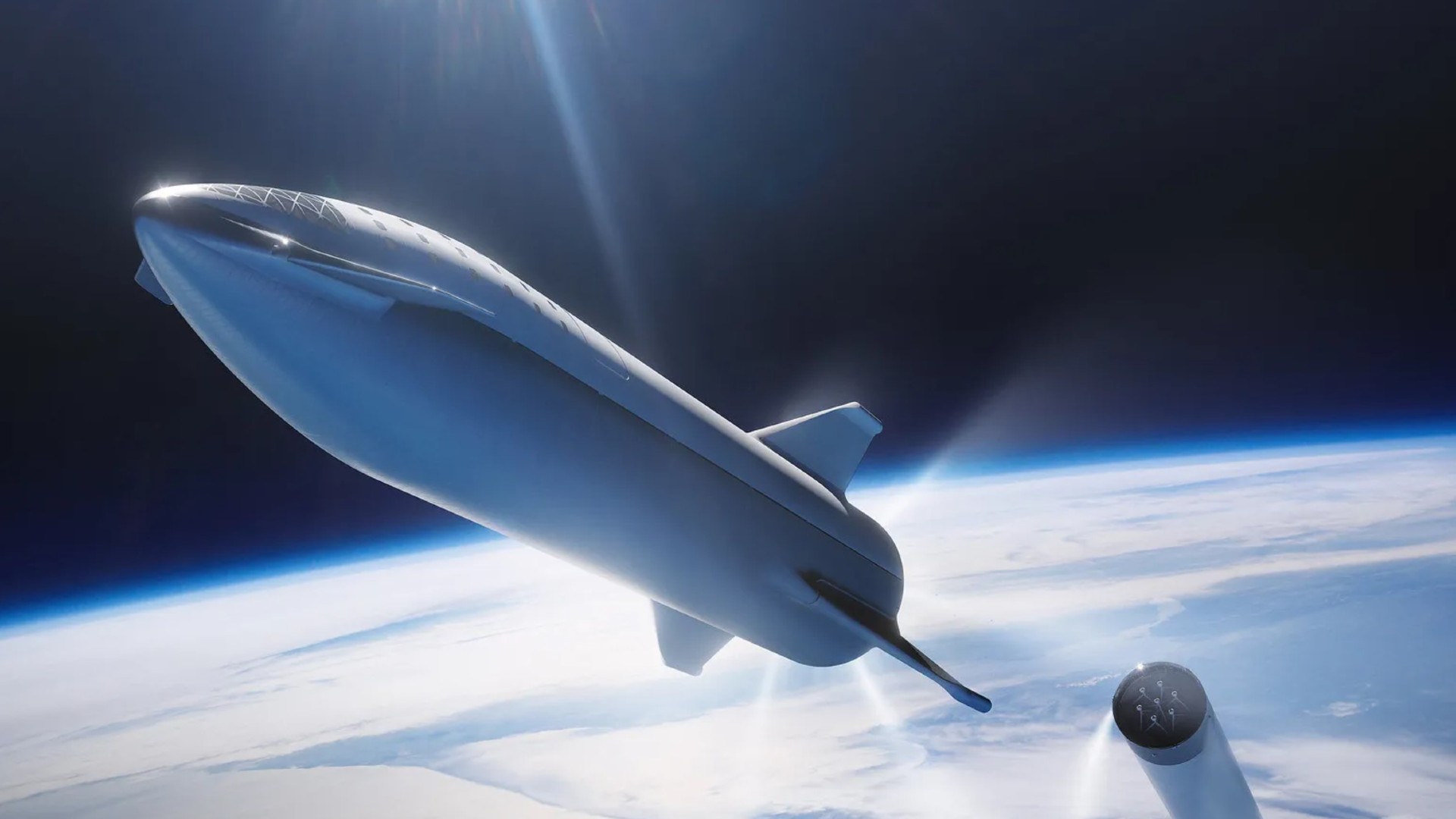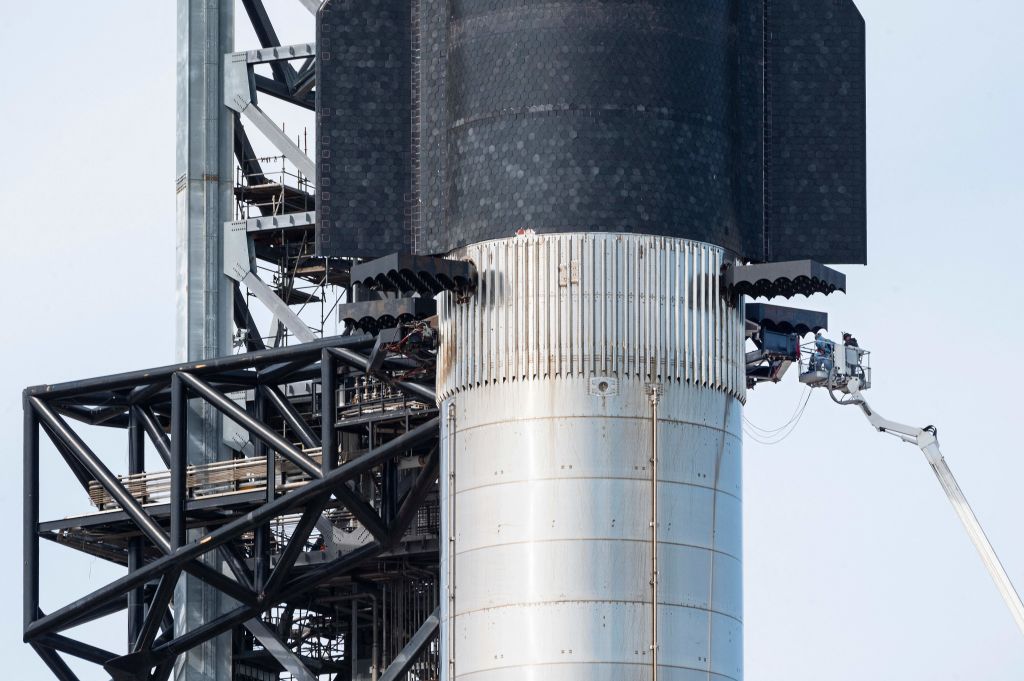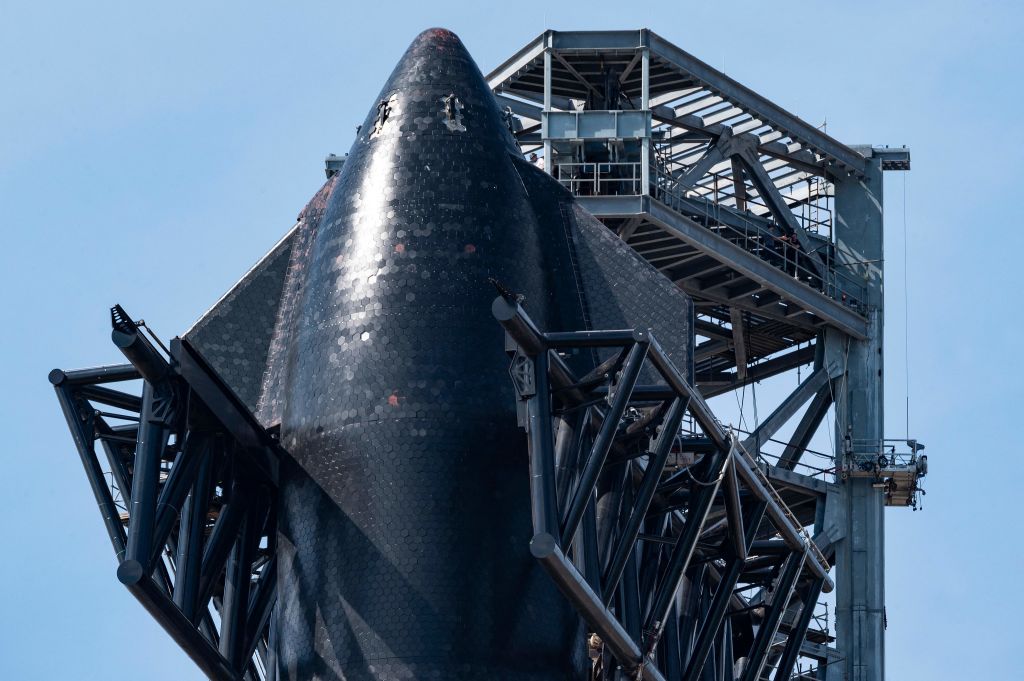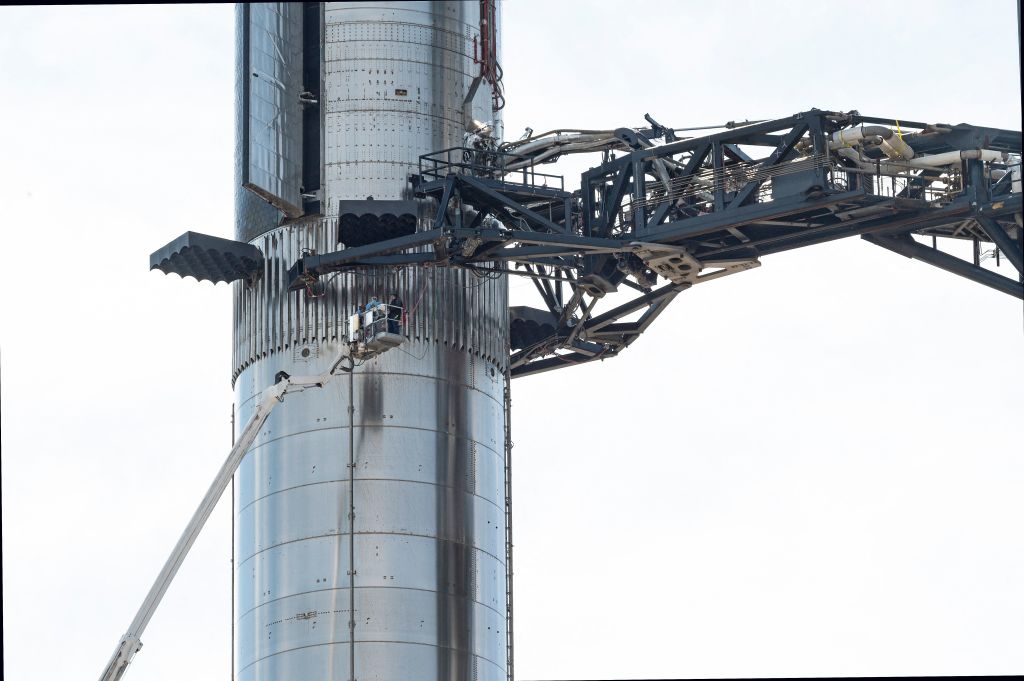SpaceX's Starship will reach orbit this year on road to Mars, Elon Musk says

SpaceX will hit a big milestone this year on its road to Mars, if all goes according to plan.
The company is developing a giant rocket known as Starship to help make Mars colonization and a variety of other ambitious exploration feats possible. Starship prototypes have taken just a handful of low-altitude hops off Earth's surface to date, but the vehicle is on target to earn its orbital wings in the relatively near future, SpaceX founder and CEO Elon Musk said.
"I feel, at this point, highly confident that we'll get to orbit this year," Musk said Thursday night (Feb. 10) during a livestreamed Starship update from Starbase, SpaceX's facility in South Texas, near the Gulf Coast hamlet of Boca Chica Village.
Photos: SpaceX lifts huge Super Heavy rocket onto launch stand
Big rocket, big dreams
SpaceX is developing Starship to take people and cargo to the moon, Mars and other deep-space destinations. The system consists of two elements: a huge first-stage booster known as Super Heavy and an upper-stage spacecraft called Starship.
When fully stacked, a Starship vehicle towers about 390 feet (119 meters) above the ground. That's taller than any other rocket ever built; the previous record holder, NASA's Saturn V moon rocket, stood 363 feet (111 m) tall. And Starship's thrust will be more than twice that of the iconic Saturn V, Musk said.
Both Super Heavy and Starship are designed to be fully and rapidly reusable, a cost-saving breakthrough that Musk and SpaceX believe will revolutionize spaceflight and exploration. If everything goes well, for example, each Starship vehicle will be capable of launching from Earth's surface every six to eight hours, and every Super Heavy will be able to do so roughly every hour, on missions that deliver up to 150 tons of payload to orbit, Musk said.
Breaking space news, the latest updates on rocket launches, skywatching events and more!
Such incredibly high flight rates would bring per-mission costs down dramatically.
"It may be as little as a few million dollars per flight — maybe even as low as a million dollars per flight," Musk said. "These are crazy low numbers by space standards."





If Starship even gets close to those cost and cadence numbers, Mars colonization — a long-held goal of both Musk and SpaceX — becomes a real possibility. The billionaire entrepreneur estimated that humanity will need to transport about 1 million tons of material to the Red Planet to establish a self-sustaining city there.
"Starship is capable of doing that," Musk said. "And I think we should try to do that as soon as we can. The window of opportunity may be open for a long time — and I hope it is — but it may also be open for a short time."
Super Heavy and Starship are powered by SpaceX's new Raptor engine. SpaceX designed Raptor with Mars in mind; the engine burns liquid oxygen and liquid methane, propellants that can be sourced on the Red Planet, Musk has said.
But Starship will go to the moon before it reaches Mars, if all goes according to plan. In 2018, SpaceX announced that Japanese billionaire Yusaku Maezawa had booked a round-the-moon flight on Starship, a mission that could launch as early as next year. (It won't be Maezawa's first spaceflight; he lived on the International Space Station for nearly 12 days in December 2021.)
And in April 2021, NASA selected Starship as the first crewed lander for its Artemis moon-exploration program. The SpaceX vehicle will put NASA astronauts down on the moon on the Artemis 3 mission, which is targeted to lift off in 2025 or thereabouts.
Video: Watch SpaceX's Starship SN20 test-fire 6 Raptor engines
Updated Starship design, multiple launch sites and more
Thursday's presentation was Musk's first in-depth Starship update in more than two years; he last gave such a talk in September 2019. So he had some new details to share.
For example, Musk said that Super Heavy will sport 33 Raptors going forward — an increase over the previous number, which was 29. The final Starship vehicle will likely get a power boost as well, from its current six Raptors to nine, Musk added.
He spoke in front of the fully stacked Starship that will perform the program's first orbital test flight, a duo known as Booster 4 and Ship 20. SpaceX aims to have the vehicle ready to fly around the time that the U.S. Federal Aviation Administration (FAA) wraps up its environmental assessment of Starbase, a milestone that's expected by the end of the month.
Musk expressed optimism that the review will end up going SpaceX's way — that the FAA won't recommend drafting a lengthy and time-consuming environmental impact statement (EIS).
But if the agency does decide an EIS is necessary, SpaceX has some flight options. The company already has the necessary approvals to launch Starship from its facilities at NASA's Kennedy Space Center (KSC) in Florida, Musk said, though it still needs to build a launch-and-catch tower for the vehicle there. (SpaceX aims to boost Starship flight rates by bringing recently launched Super Heavy boosters down directly on the launch mount.)
"So I guess our worst-case scenario is that we would, I don't know, be delayed for six to eight months to build up the Cape launch tower and launch from there," he said, referring to Florida's Cape Canaveral.
And Starbase and KSC won't be the only Starship launch sites. SpaceX is turning two former deepwater oil rigs into offshore launch platforms known as Phobos and Deimos, named after the two moons of Mars. The company aims to have a full launch capability on one of the platforms, as well as at Starbase and KSC, by the end of the year, Musk said.
Starship's first few orbital flights may not go entirely according to plan; a crash here and there in the program's early test campaign are to be expected, Musk said.
"We'll probably lose a few vehicles along the way. With Falcon 9, I think it took us 14 or 15 attempts to successfully land the first booster," he said, referring to SpaceX's workhorse Falcon 9 rocket, which has aced nearly 100 booster landings to date.
"I don't think it'll take us that many with Starship, because we have that experience," he said. "But it's certainly not a sure thing that it'll work the first time."
Mike Wall is the author of "Out There" (Grand Central Publishing, 2018; illustrated by Karl Tate), a book about the search for alien life. Follow him on Twitter @michaeldwall. Follow us on Twitter @Spacedotcom or on Facebook.

Michael Wall is a Senior Space Writer with Space.com and joined the team in 2010. He primarily covers exoplanets, spaceflight and military space, but has been known to dabble in the space art beat. His book about the search for alien life, "Out There," was published on Nov. 13, 2018. Before becoming a science writer, Michael worked as a herpetologist and wildlife biologist. He has a Ph.D. in evolutionary biology from the University of Sydney, Australia, a bachelor's degree from the University of Arizona, and a graduate certificate in science writing from the University of California, Santa Cruz. To find out what his latest project is, you can follow Michael on Twitter.

